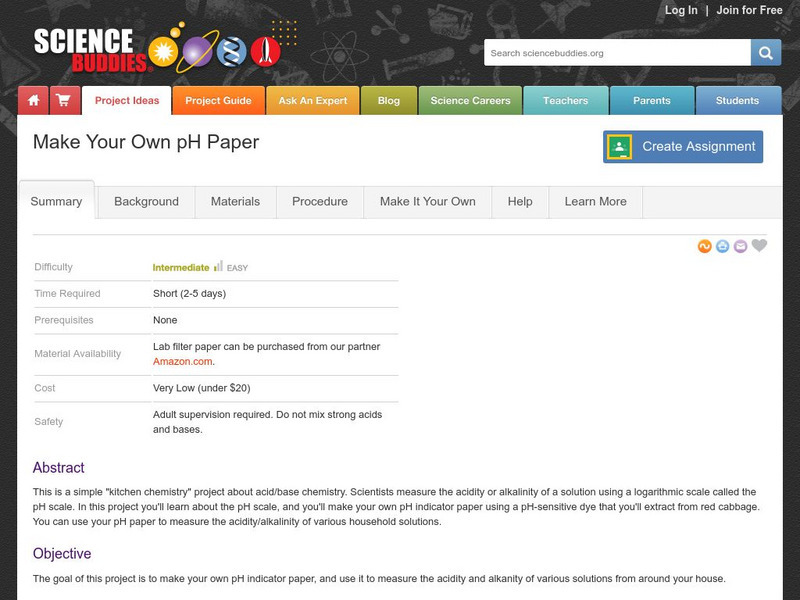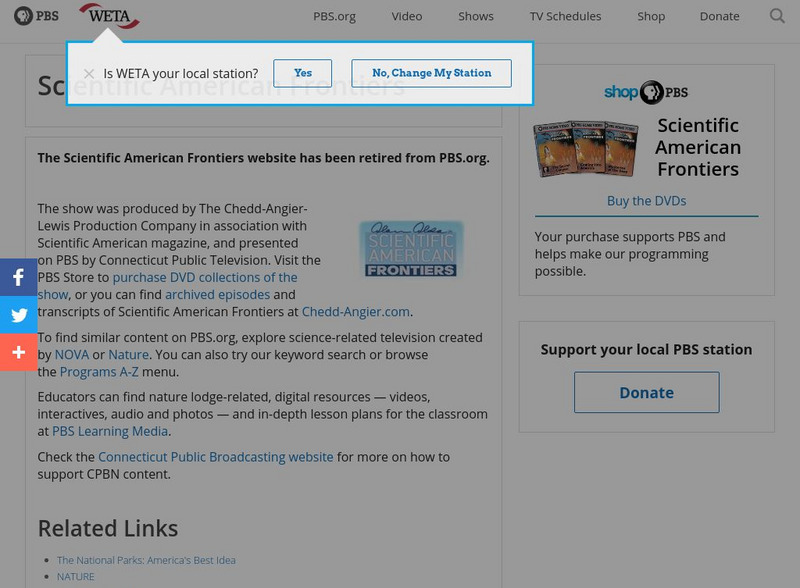Curated OER
The Impact of Water Pollution on Global Peace
Tenth graders participate in hands-on activities that require them to consider the implications of water pollution. In this environmental stewardship lesson, 10th graders conduct 6 experiments pertaining to water pollution and discuss...
Curated OER
Properties of Logarithmic Functions
Students solve exponential functions. In this algebra instructional activity, students identify the properties of logarithmic and exponential functions. They graph their functions and solve using change of base formula.
Curated OER
Chemical Leavening Agents
Learners examine chemical leavening agents in dough and batters.
Curated OER
Simulating Mixture Problems with Colored Beads
Students practice creating mixtures out of colored beads.
Curated OER
Elements Found in Living Things
In this elements instructional activity, students review the most common elements found in living things. Students color in two pictures with the percentages of the elements found in that living thing.
Science Buddies
Science Buddies: Make Your Own P H Paper
In this "kitchen chemistry" project about acid/base chemistry, you will measure the acidity or alkalinity of a solution using a logarithmic scale called the pH scale. As you learn about the pH scale, you will have the chance to make your...
CPALMS
Florida State University Cpalms: Florida Students: Cooking With Chef Ragu: Acids, Bases, & Salts
Learn what makes a substance an acid or a base. Learn how salts are formed.
Center of Science and Industry
Cosi Columbus: Cabbage Patch Chemistry [Pdf]
Make your own indicator by using red cabbage leaves and common household items. Includes full list of materials, procedures, and scientific explanation of how to determine if a substance is acidic, basic, or neutral based on the colors...
Science Fun for Everyone
Science Fun: Fizzy Fruit and P H Indicator
Make your own ph indicator and mix it with some baking soda and notice a reaction occur.
PBS
Pbs Teachers: Scientific American: About All You Can Eat: Superfoods
Explore the advent of corn as a nutritional staple in the human diet. Observe popping corn and measure differences in the mass of the corn before and after heating, and make pH indicators using fruit, flowers or vegetables.







![Cosi Columbus: Cabbage Patch Chemistry [Pdf] Activity Cosi Columbus: Cabbage Patch Chemistry [Pdf] Activity](http://lessonplanet.com/content/resources/thumbnails/410122/large/bwluav9tywdpy2symdiwmduymc0ynde4oc0xzxmzchv6lmpwzw.jpg?1589985500)

